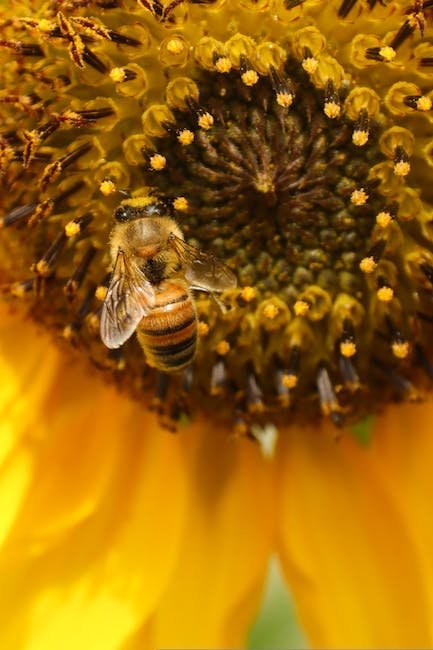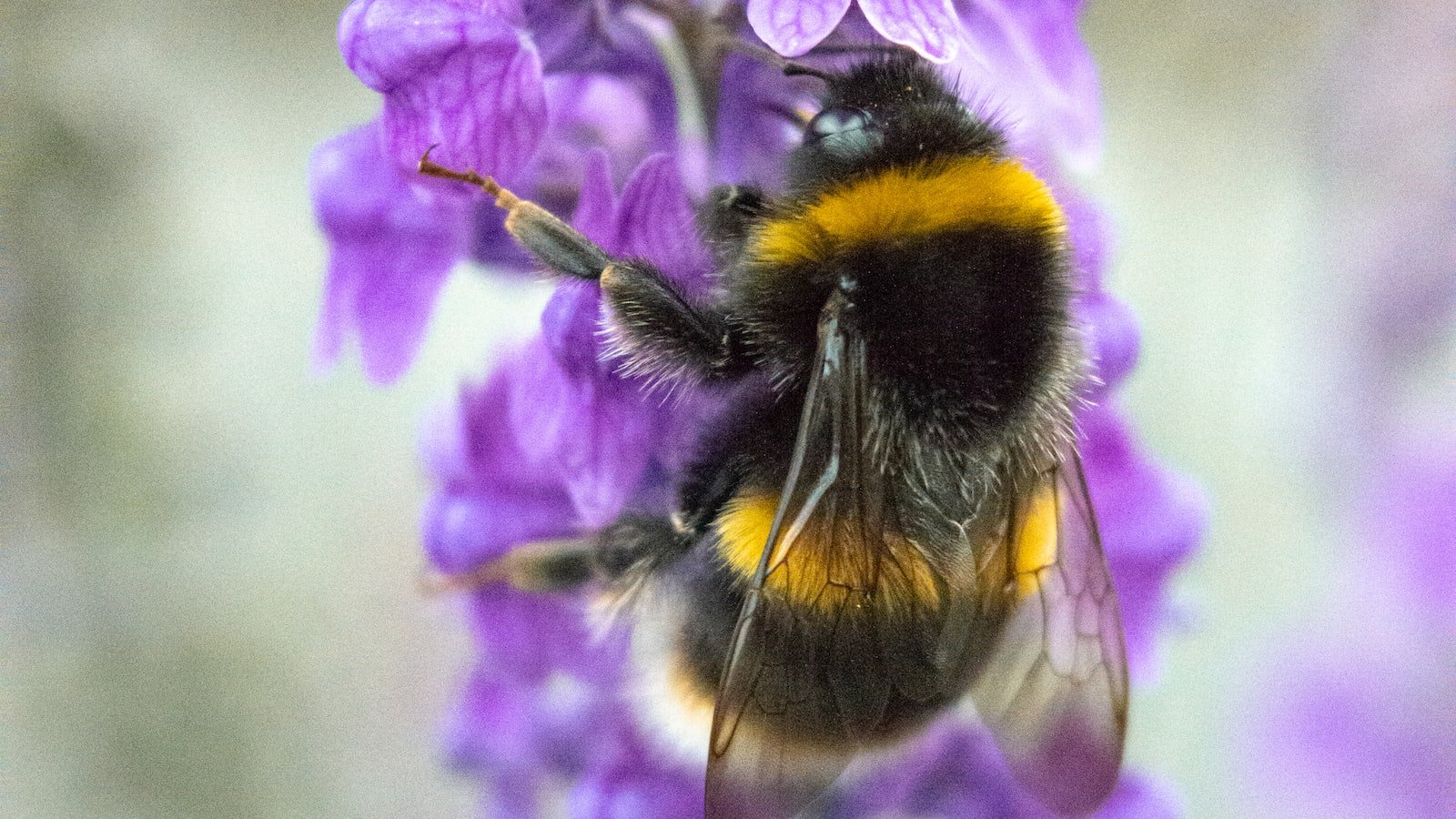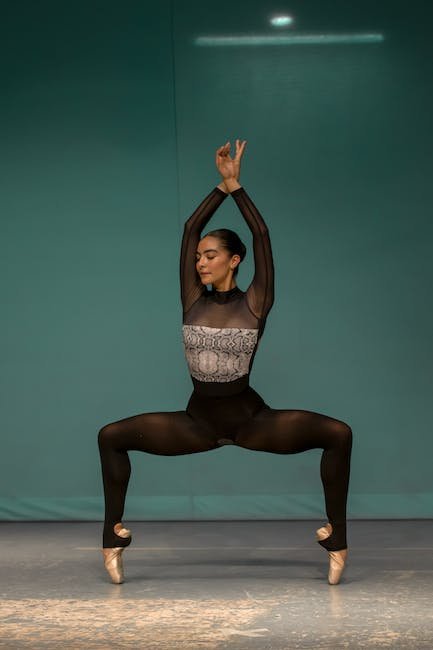In a bewitching display of communal communication, the humble honeybee communicates vital information to its hive mates through a rhythmic and enigmatic dance known as the “sickle dance”. Much like a clandestine performance, this intricate movement holds the key to understanding the location of nectar-rich flowers, ensuring the collective survival of the entire bee community. For eons, scientists, beekeepers, and fascinated nature enthusiasts have sought to crack the inimitable bee dance code, unraveling its profound meaning amidst the enchanting world of bees. Join us on a captivating journey as we delve into the mesmerizing realm of bee language, decoding the intricate bee sickle dance and unveiling the secrets it holds in our comprehensive guide to interpreting this fascinating dance form.
Table of Contents
- Decoding the Enigmatic Bee Sickle Dance: A Comprehensive Introduction
- Unveiling the Mysterious Language of Bees Through Sickle Dances
- Interpreting the Bee Sickle Dance: Key Insights and Observations
- Mastering the Art of Deciphering Bee Sickle Dances: Practical Tips and Techniques
- Enhancing Your Beekeeping Skills: Fine-tuning Interpretation of the Bee Sickle Dance
- Q&A
- Final Thoughts

Decoding the Enigmatic Bee Sickle Dance: A Comprehensive Introduction
The Dance Language of Bees
Within the realm of bees, an enigmatic and fascinating behavior known as the bee sickle dance has captured the curiosity of scientists and beekeepers alike. This complex form of communication plays a crucial role in conveying information about the location and quality of food sources to other members of the hive. By unravelling the secrets behind the bee sickle dance, we can gain valuable insights into the intricate social structure and intelligence of these remarkable insects.
Unveiling the Mystery
The bee sickle dance is a mesmerizing display performed by worker bees within the hive. Through a series of precise movements and patterns, these industrious insects reveal the distance, direction, and type of food available to their fellow bees. It is truly a dance of precision and coordination, conveying a wealth of information without the need for spoken language. So how does it work? Let’s delve into the key elements that make up this enigma.
The Steps of the Bee Sickle Dance
The bee sickle dance unfolds in a sequence of distinct steps, each carrying a specific meaning. Here is a breakdown of the key movements involved:
- Circle Dance: The bee starts with small circular movements to indicate a food source within a radius of 100 meters from the hive.
- Waggle Dance: A figure-eight pattern with a waggle run denotes a food source farther from the hive. The orientation of the waggle run in relation to the vertical position of the honeycomb signifies the direction to the food.
- Duration and Intensity: The length and intensity of the waggle phase provide information about the distance and quality of the food source respectively.
By analyzing these intricate dance moves, scientists have discovered a wealth of information about how bees navigate their environment and communicate with astonishing precision.

Unveiling the Mysterious Language of Bees Through Sickle Dances
The intricate world of bees has always captivated scientists and nature enthusiasts alike. While their buzzing and collective hive behavior astounds us, there is one phenomenon that continues to pique our curiosity—their dance language known as “sickle dances.” These mesmerizing moves are how bees communicate crucial information, sharing the location of food sources with remarkable precision and efficiency.
Unlike any other species on Earth, bees have developed an extraordinary form of communication that relies solely on dance. Through a combination of rapid spins, figure-eight patterns, and delicate waggle movements, they manage to convey vital details to their fellow hive mates. This secret language has long perplexed researchers, but recent breakthroughs in deciphering the complexity of bee dances have shed new light on this remarkable phenomenon.
- Waggle Dance: The waggle dance, characterized by a bee moving in a figure-eight pattern, has been a subject of intrigue for scientists. By vibrating their bodies and shaking their abdomens, bees communicate the direction and distance of a food source to other worker bees. The angle of the waggle pattern in relation to the vertical line of the hive represents the direction, while the duration of the dance corresponds to the distance.
- Round Dance: As mysterious as it sounds, the round dance is performed by bees to indicate a nearby food source. Unlike the waggle dance, it does not provide exact distance or direction but rather signals the abundance of resources in the vicinity. The bee performs a circular movement, changing its direction every so often, enticing others to explore the area.
This intriguing dance language is a testament to the complex and harmonious society of bees. As scientists continue to unravel the secrets hidden within their dance moves, we gain a deeper understanding of one of nature’s most fascinating phenomena. The more we uncover, the closer we come to fully appreciating the intricate language of bees and the incredible intelligence of these tiny yet extraordinary creatures.

Interpreting the Bee Sickle Dance: Key Insights and Observations
The bee sickle dance, also known as the waggle dance, is a fascinating behavior observed in honeybees that serves as a means of communication within the hive. Through meticulous study and observation, scientists have uncovered key insights into this intricate dance and its significance.
One key insight is that the direction and duration of the waggle dance convey important spatial information to other bees. For instance, a bee may perform a straight waggle run to indicate the direction of a food source relative to the position of the sun. The angle at which the bee waggles in relation to vertical signifies the angle or azimuth of the target in relation to the sun. This dance language effectively communicates vital foraging information to the rest of the colony, enabling efficient resource utilization.
Another noteworthy observation is the effect of dance intensity on the level of recruitment. Bees tend to increase the vigor and duration of their dance depending on the value and proximity of the food source. This intensity acts as a signal for other bees to prioritize the indicated location for foraging. The modulation of dance intensity helps optimize the allocation of workforce resources and ensures the collective success of the colony.
Mastering the Art of Deciphering Bee Sickle Dances: Practical Tips and Techniques
Practical Tips and Techniques for Mastering Bee Sickle Dances
Bee sickle dances, known as waggle dances, are a fascinating way bees communicate with each other, providing valuable information about the location and quality of food sources. To truly understand and decipher these intricate dances, here are some practical tips and techniques that can help you become a master in the art of bee communication:
- Observe and Note Patterns:
- Learn the Bee Dance Vocabulary:
- Practice Patience and Field Work:
Careful observation is key to decoding bee sickle dances. Look for patterns in the direction, intensity, and speed of the dance. Take note of the length of the waggle phase and the number of repetitions, as these convey specific messages related to distance and food source quality.
Bees have a unique dance vocabulary to express various elements of a food source, such as distance, direction, and type. Educate yourself on this vocabulary by studying their elaborate movements. Remember, the angle at which the dance occurs with respect to vertical signifies the direction of the food source in relation to the sun. The length of the waggle phase indicates the distance.
Decoding bee sickle dances is a skill that requires patience and practice. Spend time observing bees in their natural habitat, meticulously studying their dances. The more experience you gain, the better you’ll become at interpreting their complex choreography.
By following these practical tips and techniques, you can sharpen your ability to decipher bee sickle dances and unlock the secrets of their incredible communication system. Remember, observing, studying, and practicing are the keys to mastering this extraordinary art.
Enhancing Your Beekeeping Skills: Fine-tuning Interpretation of the Bee Sickle Dance
As beekeepers, we understand the invaluable importance of communication within a bee colony. The dance language, specifically the bee sickle dance, is a vital tool that allows bees to communicate important information about food sources, water locations, and potential threats. Enhancing your beekeeping skills involves fine-tuning your interpretation of the bee sickle dance to improve your understanding of your buzzing friends.
Here are a few tips to master the art of deciphering the bee sickle dance:
- Observe with precision: Pay attention to the behavior of worker bees when they return to the hive. Look for patterns, variations in the dance, and the intensity of the dancer’s movements.
- Decode the meaning: Recognize that the duration, direction, and repetition of the dance hold valuable information. Longer dances indicate greater distances, while different angles convey specific directions.
- Practice makes perfect: Regularly spend time observing your bees and decoding their dance language. The more familiar you become with their movements, the better you’ll be at understanding their messages.
Fine-tuning your interpretation of the bee sickle dance is not just about understanding the immediate needs of your bee colony. It is also a fascinating way to deepen your connection with these incredible creatures and gain insights into their intricate world. So grab your beekeeping suit, head out to the hive, and delve into the captivating dance language that unites the bee community!
Q&A
Q: What is the bee sickle dance and why is it important?
A: The bee sickle dance refers to the intricate movements performed by honeybees to communicate the location of food sources. It is crucial as it allows bees to share vital information within the hive and ensures the survival of the colony.
Q: How can I interpret the bee sickle dance?
A: Interpreting the bee sickle dance requires a keen observation of the dance itself. The direction and duration of the dance, along with the angle of the dancer’s body, provide clues about the location and distance of the food source.
Q: What do the different dance patterns indicate?
A: Bees use two primary dance patterns: the round dance and the waggle dance. The round dance signifies a nearby food source, while the waggle dance indicates a food source further away, with the angle and duration of the waggle conveying distance.
Q: Are there any other factors to consider when interpreting the bee sickle dance?
A: Yes, apart from the dance itself, factors such as the intensity of odor and the abundance of nectar can influence the dance’s interpretation. Additionally, the dance can be influenced by external factors like weather conditions and fluctuations in floral resources.
Q: Can the bee sickle dance be easily understood by humans?
A: While the bee sickle dance may seem complex, it has been successfully deciphered by scientists. A trained eye and a basic understanding of bee behavior can enable humans to interpret and decode the dance patterns accurately.
Q: Can the bee sickle dance change over time?
A: Yes, the bee sickle dance can evolve or adapt as the availability and location of food sources change. Bees are known to modify their communication methods to effectively relay information to their fellow hive members.
Q: How can interpreting the bee sickle dance benefit beekeepers or researchers?
A: Understanding and interpreting the bee sickle dance can provide valuable insights into the foraging patterns and preferences of honeybees. Beekeepers can use this knowledge to optimize hive management techniques, while researchers can gain a deeper understanding of bee behavior and ecology.
Q: Can I learn to interpret the bee sickle dance on my own?
A: Although it is possible to learn the basics of interpreting the bee sickle dance through observation and study, it is highly recommended to seek guidance from beekeeping experts or join specialized training programs. Their expertise can enhance your understanding and accuracy in deciphering the dance.
Final Thoughts
As we delve deeper into the enigmatic world of bees and their intricate dances, it becomes clear that these tiny creatures possess a language all their own. The bee sickle dance, a fascinating form of communication, offers a window into the secrets of their bustling hives. Through this guide, we have embarked on an extraordinary journey, decoding the mystifying realm of the bee language.
We have witnessed the harmonious synchronized movements of the bees as they share valuable information about plentiful nectar sources. We have marveled at their ability to convey distance and direction through a mere wiggle and waggle of their bodies. And we have come to appreciate the precision and complexity hidden within their intricate choreography.
But as we conclude our exploration, it is essential to remember that understanding the bee sickle dance is just the beginning of our understanding of these remarkable insects. The bees, with their collective intelligence, have so much more to offer. Their dances unveil but a fraction of the rich tapestry of their existence.
So let us not limit our fascination to the beauty of their dance alone. Let us ponder the intricate social structures that bind these tiny creatures together, the delicate balance they maintain between survival and cooperation, and the tireless work they perform that sustains ecosystems far beyond their hive walls.
As we step away from this guide, armed with newfound knowledge of the bee sickle dance, let us open our hearts and minds to the awe-inspiring wonders of the natural world. Let our curiosity fuel our desire to unravel mysteries yet untold, and let us keep the door wide open to the ongoing dialogue between humans and the enchanting kingdom of bees.
In the end, we shall forever cherish the humble dance of the bees, for within its intricate steps lie the secrets to their survival and the profound interconnectedness of all living things.
As an affiliate, my content may feature links to products I personally use and recommend. By taking action, like subscribing or making a purchase, you’ll be supporting my work and fueling my taco cravings at the same time. Win-win, right?
Want to read more? Check out our Affiliate Disclosure page.